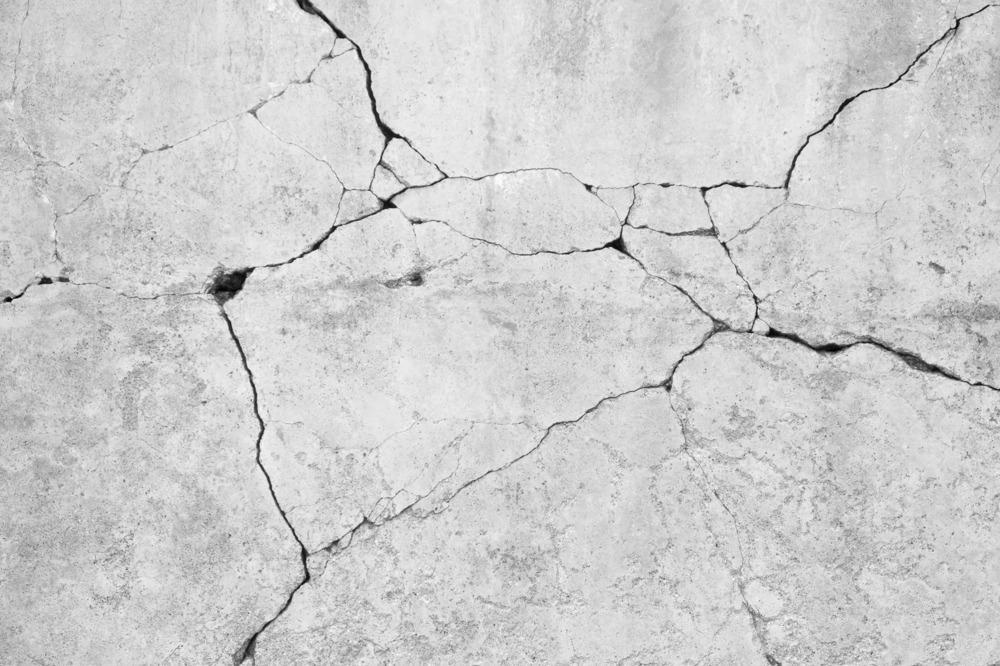Crack self-healing in concrete is analyzed thoroughly in the journal Cement and Concrete Composites using water permeability testing. It was found that self-healing can improve the durability of concrete, using additional healing agents into cement materials.

Study: Quantitative evaluation on self-healing capacity of cracked concrete by water permeability test – A review. Image Credit: komkrit Preechachanwate/Shutterstock.com
Concrete: the Popular Material and Its Problem
Concrete is an extensively used construction material, and it is frequently regarded as a material with high strength and high durability. Cracks caused by natural or external load conditions, on the other hand, provide quick entry points for advanced species into cementitious materials, resulting in deterioration and even breakdown of concrete structures.
Conventional concrete can be defined as having no or poor self-healing ability, requiring external fixing to extend its life span. Self-healing concrete can seal cracks or defects on its own, potentially restoring mechanical and physical properties. The methods of self-healing, as known in the literature, can be divided into two categories: autogenous recovery and autonomous recovery.
Healing Cracks in Concretes
The response of dehydrated cement particles (UHCs) and carbonation is primarily responsible for autogenous healing. It is a very slow process that always requires water as an essential component. The recovery effect is proportional to the crack width, as well as the number of UHCs.
It has been discovered that if the crack width is less than 150 m, a significant self-healing influence can be accomplished. This effect can be amplified further if the crack width is lowered to 60 m.
However, predicting the accurate figure of crack width where the crack can be considered healed remains difficult. A significant recovery effect has been observed due to the large number of UHCs throughout ultra-high performance concrete (UHPC).
Autogenous Healing with Mineral Preservatives
The bending power of ruptured UHPC samples submerged in water for 20 weeks had been found to be nearly 33% greater than that of control samples. Recently, scientists made significant efforts to stimulate autogenous healing by incorporating mineral preservatives or crystalline admixtures into mixtures and curing in conditions that closely resemble marine situations.
Further Reading: Study Finds MAX Phases can Self-Heal Cracks Even at Room Temperature
In contrast to cracks healed solely by calcium carbonate in freshwater resources, cracks in seawater samples were loaded with calcium carbonate and brucite. This suggests that Mg2+ is required for the recovery process.
Water Permeability Test to Examine Crack Healing
The sealing ratio (SR) derived mostly by the water permeability test (WPT) is considered as an indicator in order to objectively examine the impact of crack behaviors on the healing efficiency of concrete.
This same SR is characterized in this context as the decrement levels of water flux, which can be estimated using the cubic law. Because the authenticity of cubic law is restricted in a real crack, modified versions were developed to predict water transmissivity.
The closure ratio (CR) can also be used to assess the effectiveness of crack healing. The self-healing properties of concrete structures are primarily achieved through reduced crack width and varied crack morphology. However, there is no quantitative relationship between crack characteristics and SR.
Research Process
The inventive devices and configurations, as well as the conceptual principle and evidence-based formulas of WPT, are introduced first in this study. The methods of autogenous healing, ureolytic bacteria-based recovery, and MEA cure are then presented.
Following that, the interactions between crack topography and water transmissivity are quantitative and qualitative investigated based on the quantification of crack geometry. Finally, the SR's interactions with the CR or the FR are addressed.
The Outcomes of Self Healing Concrete
Self-healing outcomes contribute to enhancing the characteristics of concrete. As recovery products generate in crack voids, the physical crack width narrows, and the in-plane deformation increases due to the constructed obstacles, resulting in decreased water transmissivity.
The quantification connection between crack geometry and recovery effectiveness can be formed and evaluated using the calibrated SR (sealing ratio) by the WPT (water permeability test). Only when the water flow attains a steady-state can the WPT accurately calculate the water transmissivity.
The duration required to reach this phase is determined by temperature and saturation situations. Rs (surface roughness) has a greater impact on the transmissivity of fiber-reinforced concrete mixtures than on conventional concrete.
Because of the barriers formed in cracks, the flow path is prolonged and tortuous, leading to low transport properties. Such consequences, however, tend to decline as crack width increases. Unlike the filling ratio (FR), the SR and closure ratio (CR) appear to be more appropriate for assessing the recovery effectiveness of ureolytic bacteria-based healing concrete as well as autogenous recovery concrete.
Future Research
The following are some suggestions for future research. A precise relationship between surface and healing efficiency must be established, which can then be used to know the implications of outer reaction sites on self-healing capabilities.
In experimental tests, FR must be determined using a high-precision 3D-laser scanner, in which both the quantity of healing items and the crack morphology can be accurately procured.
Reference
Hou, S., et al. (2022). Quantitative evaluation on self-healing capacity of cracked concrete by water permeability test – A review. Cement and Concrete Composites. Available online 3 January 2022. https://www.sciencedirect.com/science/article/pii/S0958946521004704?via%3Dihub
Disclaimer: The views expressed here are those of the author expressed in their private capacity and do not necessarily represent the views of AZoM.com Limited T/A AZoNetwork the owner and operator of this website. This disclaimer forms part of the Terms and conditions of use of this website.